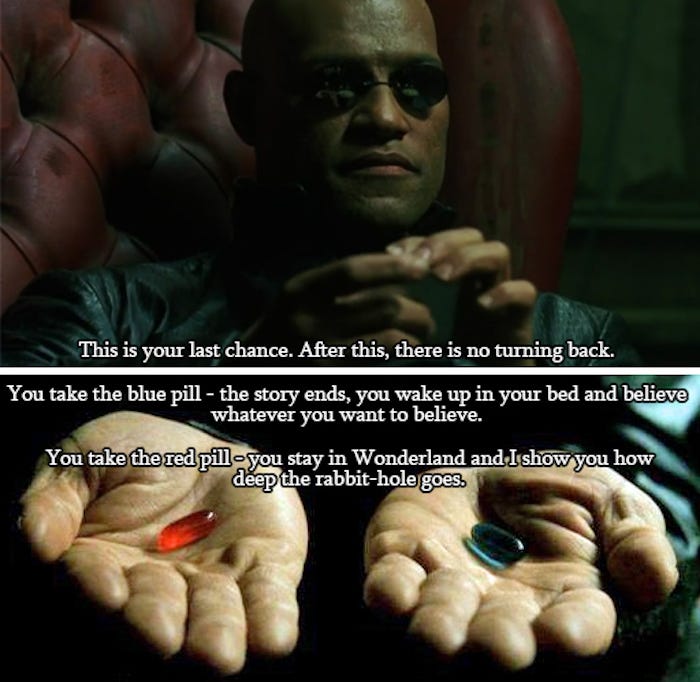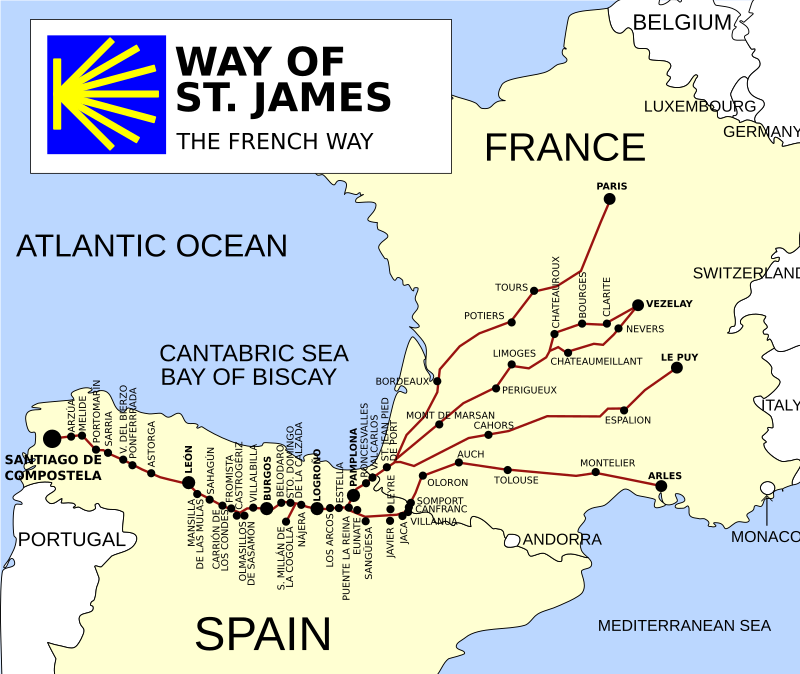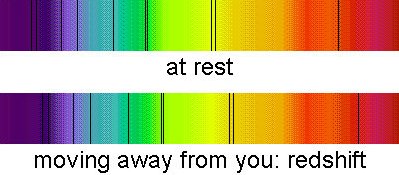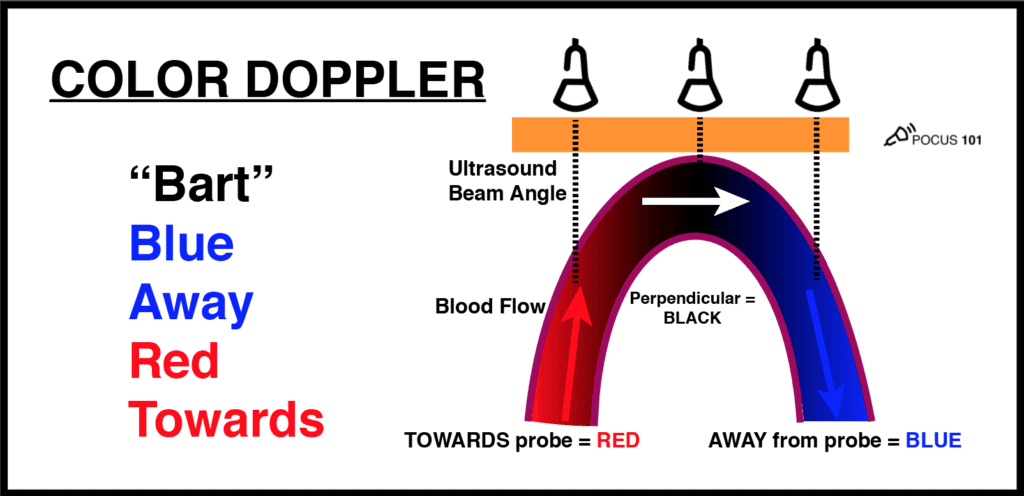|
|
General: ERNEST LAWRENCE (HOLY GRAIL) S CYCLOTRON CALIFORNIA BERKELEY UNITED STATES
Elegir otro panel de mensajes |
|
|
Ernest Lawrence's Cyclotron:
Invention for the Ages
By Lynn Yarris, LCYarris@lbl.gov
H istorians cite the Roaring Twenties as the decade in which the United States began its transition to a modern, technology-based society. For the first time in the nation's history, a majority of its citizens lived in urban areas. The Golden Age of radio broadcasting began. Automobiles, telephones, and electric appliances became staples. The stock market soared and crashed. Prohibition came and (later) went. Suffrage came and stayed. Politicians gave us isolationism, preachers gave us revivalism, and bootleggers brought us organized crime.

Ernest Lawrence, Glenn Seaborg and Robert Oppenheimer in
1946 at the control panel of the 184-Inch Cyclotron.
This was also a period of momentous individual achievement and the emergence of new leaders who forever changed the way things had been done. Charles Lindbergh's solo flight across the Atlantic ushered in the age of modern aviation; Babe Ruth's home-run heroics made baseball the national pastime; and Henry Ford's assembly lines opened the doors to mass production. In the arts, the literature of Scott Fitzgerald and Ernest Hemingway, the music of George Gershwin, the humor of Charlie Chaplin, and the paintings of Edward Hopper showed the way with their enduring brilliance. And in the arcane world of science, a 27-year-old physics professor in Berkeley began the work that would launch the modern era of multidiscipline national laboratories. His name was Ernest Orlando Lawrence.
Lawrence arrived at the University of California's Berkeley campus in the summer of 1928, having been wooed from a faculty position with Yale University by promises that included auxiliary connections to UC's Chemistry Department. Until then, the traditional practice of science was that physicists, chemists, and biologists worked within their own departments; seldom did the twain meet. Access to scientists and students from other disciplines, as well as to engineering staff, was critical to Lawrence's success as a researcher. It also set the pattern for the unique laboratory he created.
Inspired by a paper from Norwegian engineer Rolf Wideroe, Lawrence invented a unique circular particle accelerator, which he referred to as his "proton merry-go-round," but which became better known as the cyclotron. The first cyclotron was a pie-shaped concoction of glass, sealing wax, and bronze. A kitchen chair and a wire-coiled clothes tree were also enlisted to make the device work. Despite its Rube Goldberg appearance, the cyclotron proved Lawrence's point: whirling particles around to boost their energies, then casting them toward a target like stones from a slingshot is the most efficient and effective way to smash open atomic nuclei.
In his first year at Berkeley, Lawrence developed close relationships with two Cal professors outside of the Physics Department--chemist Gilbert Lewis and electrical engineer Leonard Fuller. From Lewis he would later get deuterons, the hydrogen isotope in heavy water that proved an invaluable "stone" for smashing atoms. With the help of Fuller, who was also vice-president of the Federal Telegraph Company, he obtained an 80-ton magnet for which the company had no use.
The accelerating chamber of the first cyclotron measured five inches in diameter and boosted hydrogen ions to an energy of 80,000 electron volts. Even as his assistants, M. Stanley Livingston and David Sloan, were constructing the 11-inch cyclotron -- a machine that would go on to break the one million electron volt (MeV) barrier -- Lawrence was dreaming of bigger things. The two gifts from his friends -- the magnet and deuterons to use as projectiles -- made possible his dream of constructing a cyclotron with an accelerating chamber some 27-inches in diameter and capable of reaching energies of nearly 5 MeV. But Lawrence would need more laboratory space to see the project through.
Lawrence had been recruited to Berkeley as part of the University's determination to build a physics department equal in stature to its celebrated Chemistry Department. Toward that end, Cal had opened Le Conte Hall in 1924 as one of the largest physics buildings in the world. Le Conte Hall could accommodate the 11-inch cyclotron in Room 329, but a 27-inch cyclotron with all of its trappings would be too much.
With backing from physicists and chemists alike, Lawrence procured from the University an empty building adjacent to Le Conte Hall called the Civil Engineering Testing Laboratory. In August 1931 the building was turned over to Lawrence and renamed the "Radiation Laboratory."
 |
The old Radiation Laboratory |
The 27-inch accelerating chamber of the Rad Lab's first cyclotron was soon replaced with a 37-inch chamber. By 1936, the 37-inch cyclotron, which could accelerate deuterons to 8 MeV and alpha particles to 16 MeV, had been used to create radioisotopes and the first artificial element, technetium. The design, construction, and operation of these increasingly larger cyclotrons involved a growing number of physicists, engineers, and chemists. (Lawrence was never certain as to whether his research should be called nuclear physics or nuclear chemistry.)
In recognition of its departure from the traditional academic lines of departmental science, the University officially established the Radiation Laboratory as an independent entity within the Physics Department on July 1, 1936. Henceforth, the new laboratory would be dedicated to the pursuits of "nuclear science" rather than accelerator physics.
Around this time, Ernest Lawrence also invited his brother John, a physician, to join the Lab and explore the use of radioisotopes in biology and medical research. The extension of the Rad Lab's history-making collaborations between physicists, chemists, and engineers to also include biologists led to the construction of the Crocker Laboratory. Built next to the Rad Lab, the Crocker Lab housed a cyclotron with an accelerating chamber that measured 60-inches in diameter.
The 60-inch cyclotron, which began operations in 1939, was described by visitors as a "truly colossal machine." Its magnet weighed 220 tons, prompting someone to joke that its neutrons would reach Chicago. But even as this huge machine was being put to use on experiments that would garner Nobel prizes for researchers Glenn Seaborg and Melvin Calvin, Lawrence was at work planning an even mightier giant. The next cyclotron that Lawrence envisioned would be so large no laboratory building on campus could contain it.
Fresh off his winning of the Nobel Prize in 1939 for the invention of the cyclotron, Lawrence made his push for a machine that would feature a magnet weighing 4,000 tons. Its accelerating chamber would measure 184 inches in diameter and would be capable of rocketing atomic particles to energies in excess of 100 MeV. To house such a machine and the experimental facilities that would go with it required a building 160 feet in diameter and almost 100 feet tall. A site for this structure was found atop a knobby promontory midway up the ridge behind campus. The promontory, known as Charter Hill, became the permanent site of Lawrence's Radiation Laboratory when construction of the 184-Inch Cyclotron (its design was altered to make it a "synchrocyclotron) was completed in 1946.
Lawrence died on Aug. 27, 1958, of chronic colitis at the age of 57. In his honor, the Radiation Laboratory was officially renamed the Lawrence Radiation Laboratory. In 1971, the laboratories in Berkeley and Livermore (which Lawrence also founded) were separated and the name Lawrence Berkeley Laboratory was born. In 1995, current Director Charles Shank requested that the laboratory be officially renamed the Ernest Orlando Lawrence Berkeley National Laboratory. This was done to fully honor the man whose cross-discipline team approach to research remains the hallmark of the laboratory he founded.

A Few Highlights in Lab History
- 1930 -- Ernest O. Lawrence invents the cyclotron.
- 1931 -- Radiation Laboratory opens on UC Berkeley campus.
- 1935 -- John Lawrence comes to Lab, begins field of nuclear medicine.
- 1936 -- First artificial element (technetium) created.
- 1940 -- Carbon-14, neptunium, and plutonium discovered.
- WWII -- Laboratory makes valuable contributions to Manhattan Project.
- 1946 -- Construction of 184-Inch Cyclotron completed.
- 1947 -- Melvin Calvin uses carbon-14 as tracer to study photosynthesis.
- 1948 -- Luis Alvarez invents proton linac.
- 1950 -- "Anger cameras" invented.
- 1953 -- Donald Glaser invents bubble chamber.
- 1954 -- Bevatron completed.
- 1955 -- Antiproton discovered at the Bevatron.
- 1957 -- SuperHILAC commissioned.
- 1958 -- Ernest O. Lawrence dies; Lab renamed Lawrence Radiation Laboratory.
- 1960 -- Luis Alvarez discovers resonance states.
- 1962 -- 88-Inch Cyclotron commissioned.
- 1964 -- George Pimentel invents chemical laser.
- 1971 -- Lawrence Berkeley and Livermore Laboratories separate.
- 1974 -- J/psi particle and element 106 (seaborgium) discovered.
- 1976 -- Charmed mesons discovered.
- 1978 -- Dynamic Positron Emission Tomography is invented.
- 1979 -- Segmented mirror designed for Ten Meter Telescope.
- 1980 -- Mina Bissell proposes ECM theory on breast cancer; superwindows developed.
- 1982 -- National Center for Electron Micropscopy opens.
- 1984 -- Luis Alvarez proposes theory of dinosaur extinction; Tom McEvilly successfully predicts 1993 Parkfield earthquake.
- 1987 -- Lab gets Human Genome Center.
- 1988 -- Material harder than diamond predicted; first direct image of DNA double helix created.
- 1990 -- First genetic links to atherosclerosis identified.
- 1991-- SNO Collaboration begins.
- 1992 -- COBE satellite image of primordial universe supports Big Bang theory.
- 1993 -- ALS commissioned.
- 1994 -- Top quark discovered; STAR and B-factory approved.
- 1995 -- National Energy Research Scientific Computing (NERSC) Center acquired; Gammasphere dedicated.
- 1995 -- Lab renamed Ernest Orlando Lawrence Berkeley National Laboratory.
|
|
|
 Primer
Primer
 Anterior
2 a 12 de 12
Siguiente
Anterior
2 a 12 de 12
Siguiente
 Último
Último

|
|
|
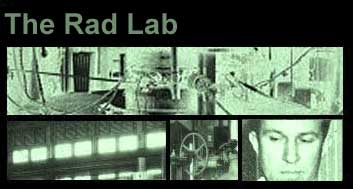
  |
The more energetic the particles produced by an accelerator, the more interesting physics they can create in the laboratory. Lawrence did not remain satisfied with the million-volt protons provided by his eleven-inch cyclotron, but hoped to increase the energy by a factor of ten or more. Higher energies required bigger magnets and faster oscillators. It also demanded more money. It was not a good time to raise money for research, as the U.S. reached the depths of the Great Depression. Universities in general suffered less than other segments of society. Still, in 1933 the physics department of the University of California at Berkeley had to cut its research budget by a third and impose an austerity program of lower salaries and fewer teaching assistants.
|
  |
|
|
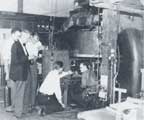
"Cyclotroneers" encouraging a beam in the 27-inch cyclotron.
|
Lawrence was obliged to seek new funding sources. He was as adept at fundraising as at building new devices and despite the grim Depression environment, he found donors for his next machine. One patron was the Research Corporation, a company that filed patents on behalf of university professors and plowed the proceeds back into academic research. Another was the Chemical Foundation, set up by the federal government to administer the thousands of German patents seized in World War I. The Research Corporation urged Lawrence to take a patent on his cyclotron. Lawrence at first resisted--like many prewar scientists, he did not think of academic research as a money-making business. But when he learned that an engineer at Raytheon had applied for a patent on a similar circular accelerator, the fear of an industrial monopoly made him file an application for the cyclotron (the patent was granted in 1934).
|
|

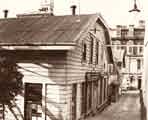
The original Radiation
Laboratory on the Berkeley Campus.
|
The university provided the remainder of the funds and a building to house the new machine. In August 1931 an old civil engineering building was made available for Lawrence, which came to be called the Radiation Laboratory. The building housed a new 27-inch cyclotron, with an 80-ton magnet originally built to power a transatlantic radio link in World War I. Lawrence acquired the magnet at a discount as war surplus. By September 1932 the cyclotron was accelerating protons up to 3.6 million electron-volts.
|
|
|
 |
|
Ernest Lawrence at the controls of the 37-inch cyclotron about 1938.
|
|
In what became typical for Lawrence, he was already planning his next machine before the current one started working. In 1937 he had a 37-inch cyclotron operating, followed two years later by a 60-inch device. To build the succession of machines Lawrence solicited $550,000 worth of expenses and equipment for his laboratory between 1931 and 1940. Donors included the state of California through the university; private philanthropies, notably the Macy and Rockefeller Foundations; and the federal government through the National Cancer Institute. Industrial firms donated equipment.
"The trade of a �cyclotroneer' is one which has experienced no depression."
—A student of Lawrence in 1938
|
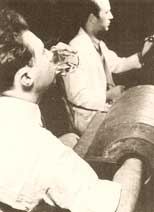
Rad Lab staff demonstrated the potential application of radioactive isotope tracers in public lectures. A volunteer would drink a "radiosodium cocktail" of salt water containing radiosodium, and trace its progress through the body with Geiger counters. |
The federal government also provided support through two New Deal agencies, the Works Progress Administration and the National Youth Authority, which put electricians, machinists, carpenters, and other technical assistants to work in the Rad Lab on the government's payroll. The Depression also produced a steady supply of physicists willing to work for nothing in order to learn cyclotronics. From 1933 to 1940 the Rad Lab had several graduate and postdoctoral students paying their own way at the lab. They helped the Rad Lab staff grow from a total of ten in 1932 to sixty in 1939.
Lawrence found another important way to elicit funds—appeals to biomedical applications. Lawrence's colleague David Sloan had put his linear accelerator to work at the university's medical school as a powerful source of X-rays. The example encouraged Lawrence to promote similar applications of the cyclotron, such as the production of radioactive isotopes, which had medical uses in attacking cancers and as "tracers" in research on metabolism, and beams of neutrons, which promised to rival the utility of X-rays.
Philanthropies at the time donated far more money to medicine, public health, and biology than to physics. In 1933 the Rockefeller Foundation, a dominant supporter of American fundamental research in years between the wars, decided to concentrate on applications of the methods of physics and chemistry to biology and medicine. But Lawrence did not just give lip service to biomedicine. He believed in the promise of particle accelerators as a possible weapon against cancer. In 1937 Lawrence brought his mother, diagnosed with inoperable cancer, to San Francisco for treatment with Sloan's X-ray tube, after which her condition dramatically improved.
|
|
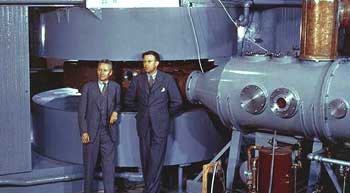
Posing with the newly completed 60-inch cyclotron in the Crocker Laboratory are (left to right) Donald Cooksey and Ernest Lawrence.
|
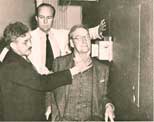
Robert Stone and
John Lawrence, Ernest's
brother, treat a patient with neutrons from the 60-inch cyclotron. |
"I must confess that one reason we have undertaken this biological work is that we thereby have been able to get financial support for all of the work in the laboratory. As you know, it is much easier to get funds for medical research."
—Lawrence to Niels Bohr, 1935
|
|
|
|
|
|
Different cyclotron size: a) Lawrence ́s first one, b) Venezuela First one (courtesy of Dorly Coehlo), c) Fermi National Laboratory at CERN. And size matters, and Cyclotrons win as best hospital candidates due to Reactors are bigger, harder and difficult to be set in a hospital installation. Can you imagine a nuclear reactor inside a health installation? Radiation Protection Program will consume all the budget available. Size, controlled reactions, electrical control, made cyclotrons easy to install, and baby cyclotrons come selfshielded so hospital don ́t need to spend money in a extremely large bunker. Now on, we are going to talk about our first experience with the set up of a baby cyclotron for medical uses inside the first PET installation in Latin America. “Baby” means its acceleration “D” diameters are suitable to be set inside a standard hospital room dimensions, with all its needs to be safetly shielded for production transmision and synthetized for human uses for imaging in Nuclear Medicine PET routine. When we ask why Cyclotrons are better than reactors for radioisotopes production to be used in Medicine, we also have to have in mind that they has: 1. Less radioactive waste 2. Less harmful debris
https://www.researchgate.net/figure/Different-cyclotron-size-a-Lawrence-s-first-one-b-Venezuela-First-one-courtesy-of_fig3_221906035
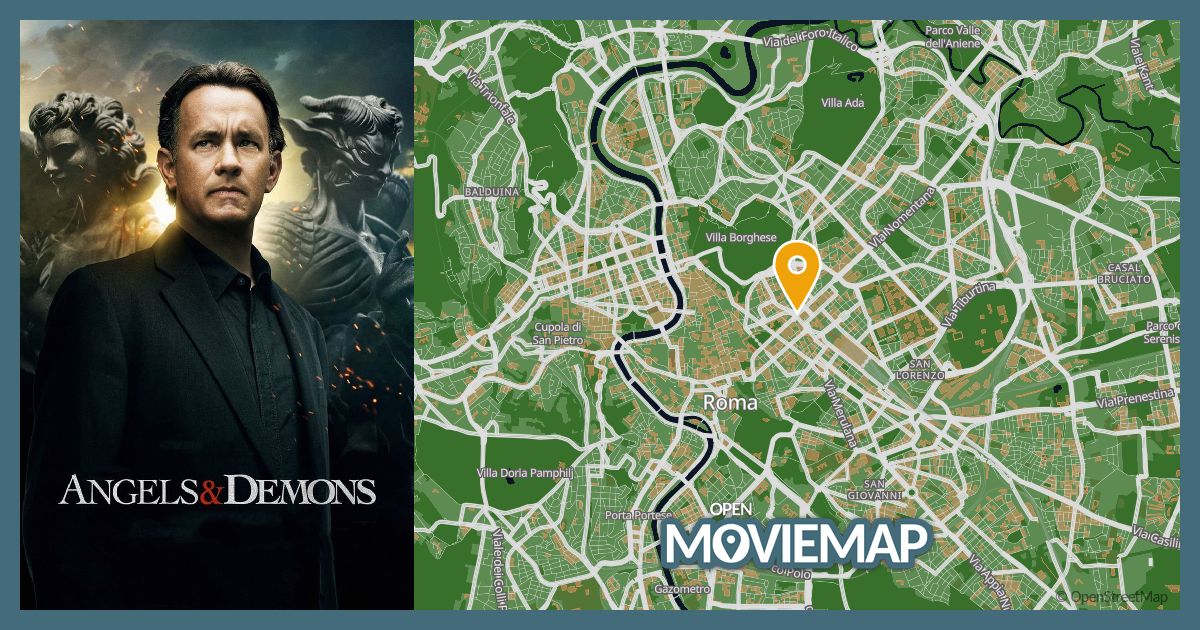 |
|
|
|
|
Viktor Schauberger: The Man Who Invented Flying Discs For The Nazis
- ENGLISH NEWS
- TECHNOLOGY GAME SCIENCE
VN EN
Some historical figures leave behind little real information, but many secrets and mysteries.
 Ảnh minh họa
One such person was a scientist, thinker, philosopher, and inventor, and the author of innovative technological ideas. He was hired to work for the Third Reich and allegedly built for the Nazis a flying machine that looked like a disc-shaped UFO for the Nazis.
And then this man suddenly disappeared from history as quickly and mysteriously as he appeared. It is officially believed that he died a natural death, but there are many theories that he was either deliberately killed or his death was faked, but in fact was kidnapped for his own purposes.
The Mysterious Disappearance Of Viktor Schauberger
A man named Viktor Schauberger was born in Austria in 1885 and initially had an experience that had nothing to do with his future fame as the inventor of Hitler’s UFOs. He grew up in a hereditary family of foresters living in a vast area of remote wilderness in Holzschlag, Upper Austria, and spent most of his youth and middle years tending more than 10,000 hectares of land.

During this time, constantly being in nature, he began to make many observations that profoundly changed his life and outlook. In particular, he was absolutely fascinated by water, which he regarded as an independent living organism, calling it the “Blood of the Earth” and the source of all living things.
He especially focused on such properties of water as its spiral forms, eddies, fast currents, eddies, and easy harmony with the surrounding world.
He obsessively studied the movements and effects of water, continuing to form many theories, and then he began to craft completely innovative types of spiral-cut water gutters, the design of which was based on his own hydrodynamic system.
According to this system, an inward-moving and swirling water vortex could be used for power and thrust, which was the beginning of his revolutionary new idea for a new type of engine that relied on implosion (an explosion directed inward) rather than conventional explosions.
Viktor Schauberger was completely self-taught, he never took any university courses, but he soon gained international recognition thanks to some of his ideas, patents, and inventions, and controversy. He was critical of the many inventions available in his era, believing that they work against the laws of nature and are destructive.
Instead, he embraced the idea that humanity and nature can live together using alternative energy sources, such as using natural processes and live in harmony with them. His motto was “Kapieren und kopieren” (To comprehend and copy nature). Schauberger believed that many inventions of mankind were contrary to nature, and later he stated that even the propeller was an imperfect invention:
“As nature best demonstrated in the case of the winged maple seed, today’s propeller is a pressure rotor, and therefore a brake rotor, whose purpose is to allow the heavy maple seed to slowly fall to the ground like a parachute and move away from the wind.
No bird has such a rotating object on its head, nor a fish on its tail. This brake rotor was only used by a person for forward propulsion. As the propeller spins, drag increases in proportion to the square of the rotation speed. It is also a sign that this supposed propulsion device is not built naturally and is therefore out of place. “
Schauberger sought to bring his ideas to life by coming up with a detailed theory according to which water vortices can build on each other to create more and more forces, which, in turn, will create a force opposite to gravity. In essence, Schauberger was explaining how to create anti-gravity, which he called diamagnetism.
He used these theories to create fantastic inventions such as a water blast turbine that sucked in air in a spiral, reaching enormous forces. He also invented the machine that created a typhoon-like suction force to control the temperature in a room, and a power generator. These machines created energy from water and air using spiral pipes and nozzles.
All of this worked on the principles of clean energy and working with nature, apparently with little or no pollution and being completely sustainable.
It might seem odd that such a radical promoter of green energy and work with nature caught the attention of the Nazis, who were not particularly concerned with preserving the environment. But he really piqued their interest, and in 1934 the Nazis approached him with a tempting offer to work for them for a good salary. Schauberger agreed.
Furthermore. In 1938, Nazi Party member Julius Streicher allegedly personally ordered him to build an aircraft that could use a vortex engine. This device had to have the shape of a disk and move completely differently from all modern aircraft while hovering in the air in one place (levitation), performing precise maneuvers, and accelerating at high speeds.

Basically, they wanted Schauberger to build a futuristic anti-gravity ship using his own natural theories, and since they were the Nazis, he had no choice but to agree once again, receiving an exorbitant amount of money.
In 1940, Schauberger created the first prototype of his artificial UFO, called Repulsin A, which used friction between vortices and the surrounding air to force the air downward, creating an overall lifting and propelling effect, more or less producing a kind of mini-tornado, on the energy of which this ship moved.
However, it was found that the vortex motor was unstable, and the fan inside the device could not spin as fast as required because the blades were pushing out too much air. At the time, no way was found to circumvent the problem of generating more intense rotational energy, and the device was deemed too impractical.

Indeed, during the testing of the ship, although it could indeed levitate, it was almost impossible to control or move forward, usually quickly spinning out of control or even flying through the roof of the test hangar.
According to rumors, the Nazis were furious at Schauberger’s inability to solve these problems, which caused the inventor to be temporarily imprisoned. But then he came under the personal attention of Heinrich Himmler, who drew Schauberger to work on another miracle of technology – a new type of silent mini-submarine, and then ordered to continue work on a new version of the anti-gravity device called Vril-7.
It is not known how far Schauberger went with the Vril-7, as the end of World War II halted all secret Nazi research (at least official), with most of his work, prototypes, and plans destroyed so that they would not fall into the hands of the Allies.

The Americans, knowing how important Schauberger was to the Germans, arrested him and took him to the United States, intensively interrogating him, but were never able to get much information from him. However, they were able to use all the information they received to the maximum. The fundamental principles that Schauberger used were later applied to several projects, including the Avro Canada VZ-9 Avrocar, which was a vertical takeoff and landing aircraft developed during the Cold War era, and others.
Schauberger, while in the United States, tried for several more years on various civilian vortex technology projects such as generators, water purification systems and air purification devices, before eventually returning to Austria on September 25, 1958, almost penniless.
He died quite suddenly, just five days after his return to his homeland, taking all his secrets with him to the grave.
Since then, various conspiracy theories have regularly emerged about Schauberger, including that his research went much further than anticipated, and that many of the UFOs that were seen during the Second World War were in fact Schauberger’s experimental devices.
But all these are just hypotheses and unverified rumors, for sure no one knows anything. He remains in many ways a ghost person, the true scope of his work is unknown, and his research is enigmatic.
https://www.xaluannews.com/modules.php?name=News&file=article&sid=3296405 |
|
|
|
|
6 Schematic representation of a cyclotron. The distance between the pole pieces of the magnet is shown larger than reality to allow seeing what is inside
https://www.researchgate.net/figure/Schematic-representation-of-a-cyclotron-The-distance-between-the-pole-pieces-of-the_fig3_237993541 |
|
|
|
|
Subestación eléctrica de maniobras Magdalena I (Parque Solar Magdalena I)
NOVIEMBRE 17, 2021 PV MAGAZINE
Pirámide de la Espiral Xochitecatl, Tlaxcala
Fotografía: Gobierno del estado de Tlaxcala
La Dirección General de Impacto y Riesgo Ambiental de la Secretaría de Medio Ambiente y Recursos Naturales informa que ha recibido la documentación de la firma promovente Más Energía, para el proyecto de la Subestación eléctrica de maniobras Magdalena I (Parque Solar Magdalena I).
El proyecto consiste en la construcción, operación y mantenimiento de una subestación eléctrica de maniobras, dos accesos, y una línea eléctrica de entronque de 400 Kv que se interconectará a una línea de transmisión eléctrica existente de 400 Kv propiedad de la Comisión Federal de Electricidad para desahogar la energía eléctrica que se genera en la planta fotovoltaica parque solar Magdalena I al Sistema Eléctrico Nacional.
Este contenido está protegido por derechos de autor y no se puede reutilizar. Si desea cooperar con nosotros y desea reutilizar parte de nuestro contenido, contacte: editors@pv-magazine.com.
 
6 Schematic representation of a cyclotron. The distance between the pole pieces of the magnet is shown larger than reality to allow seeing what is inside
https://www.researchgate.net/figure/Schematic-representation-of-a-cyclotron-The-distance-between-the-pole-pieces-of-the_fig3_237993541
|
|
|
|
|
    
Subestación eléctrica de maniobras Magdalena I (Parque Solar Magdalena I)
NOVIEMBRE 17, 2021 PV MAGAZINE
Pirámide de la Espiral Xochitecatl, Tlaxcala
Fotografía: Gobierno del estado de Tlaxcala
La Dirección General de Impacto y Riesgo Ambiental de la Secretaría de Medio Ambiente y Recursos Naturales informa que ha recibido la documentación de la firma promovente Más Energía, para el proyecto de la Subestación eléctrica de maniobras Magdalena I (Parque Solar Magdalena I).
El proyecto consiste en la construcción, operación y mantenimiento de una subestación eléctrica de maniobras, dos accesos, y una línea eléctrica de entronque de 400 Kv que se interconectará a una línea de transmisión eléctrica existente de 400 Kv propiedad de la Comisión Federal de Electricidad para desahogar la energía eléctrica que se genera en la planta fotovoltaica parque solar Magdalena I al Sistema Eléctrico Nacional.
Este contenido está protegido por derechos de autor y no se puede reutilizar. Si desea cooperar con nosotros y desea reutilizar parte de nuestro contenido, contacte: editors@pv-magazine.com.
 
6 Schematic representation of a cyclotron. The distance between the pole pieces of the magnet is shown larger than reality to allow seeing what is inside
https://www.researchgate.net/figure/Schematic-representation-of-a-cyclotron-The-distance-between-the-pole-pieces-of-the_fig3_237993541
|
|
|
|
|
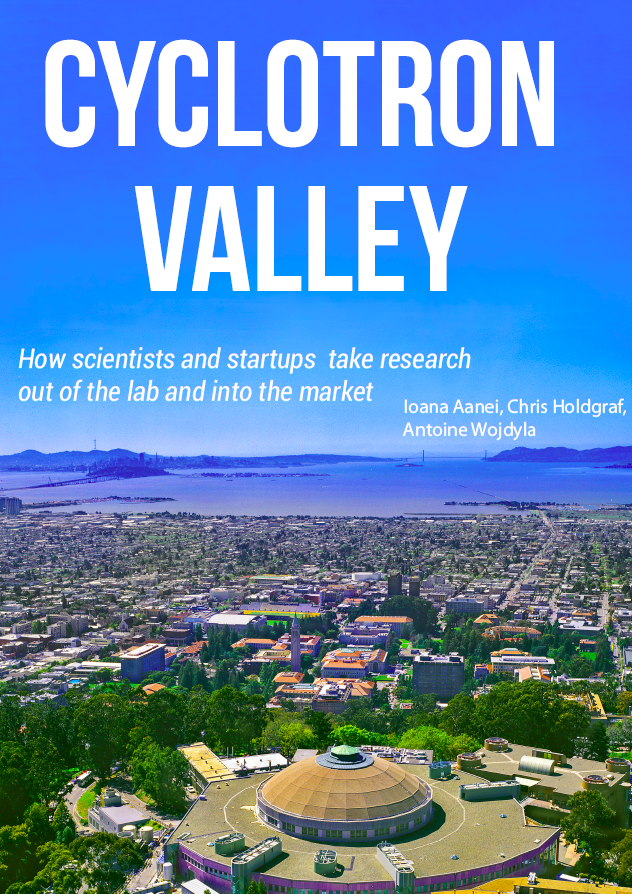
In the golden days of the microcomputer revolution, highly skilled scientists brought the Bay Area fame as an epicenter for technological innovation. Over the years, advances in hardware have given rise to advances in software, such as games and mobile apps. These tech success stories sometimes have a more “trivial” quality than Silicon Valley’s foundation in basic research and the sciences, leaving many with a lingering question: Is anyone still doing the same type of hard-fought, research-intensive work that started the silicon revolution?
Fortunately, a new kind of entrepreneur is now emerging to fill the shoes of Silicon Valley’s original trailblazers—armed with technical PhDs rather than MBAs. More and more academics are making the leap from the Ivory Tower into the world of business, rapidly growing a new, dynamic landscape of academic entrepreneurship. Hosting numerous resources for scientists hoping to make such a leap, UC Berkeley is becoming a premier gateway into the realm of science-based startups. Welcome to Cyclotron Valley.
Spot the differences: The scientist versus the entrepreneur
Understanding why entrepreneurship is growing in one of America’s most hallowed academic institutions requires understanding the career choices that academics currently face. As academic professorships dwindle and graduate student interests diversify, it is no longer true that a PhD can only be used as a stepping-stone on the road to academia (see “Oh, the places you’ll go”, BSR, Fall 2013). Fortunately, the skills painfully gained during PhD candidacy have wide applications beyond the confines of the university. The life of an academic researcher and that of an entrepreneur are more similar than you might think.
If there’s one thing that unites entrepreneurs and academics, it’s that they work hard—really hard—and are constantly tasked to solve a wide variety of problems. “In many respects, academics make wonderful entrepreneurs: they’re accustomed to resolving uncertainty, they’re familiar with building and testing hypotheses, and they’re versatile and multi-talented,” says Peter Fiske, a PhD and MBA who is now CEO of PAX Water Technologies, which develops technology for water quality improvement. While the end product of the academic lab and the startup are very different, each requires individuals to push themselves to the limit of their knowledge, time, and energy. “We actually find that PhDs and academics are much better suited for entrepreneurship than MBAs, as they come very lean in mindset and are able to do a wide variety of things,” Fiske explains. All of those hours spent in the lab are good preparation for the legwork needed to build a company from scratch.
 Peter Fiske, Haas MBA and CEO of PAX Water Technologies believes that PhDs are very well suited to entrepreneurship. Peter Fiske, Haas MBA and CEO of PAX Water Technologies believes that PhDs are very well suited to entrepreneurship.
Both research and entrepreneurship also require another crucial skill—flexibility. The academic must choose from many potential research paths and be prepared to alter his or her plans when experiments predictably don’t work. In the parlance of Silicon Valley, this is known as the pivot—an attempt to assess the validity of your current direction and then use that knowledge to devise another idea that works better. Entrepreneurs such as Fiske claim pivoting to be crucial to the success of any small startup: “One hundred percent of the time, an initial idea has to make a pivot, and you have no idea of what is valuable until you get out and talk to people, especially when you come from academia.” Pivoting comes hand in hand with another important skill: iteration. In science, iteration involves repeating an experiment over and over, making tweaks until the experiment works. Simply put, both the entrepreneur and the scientist must be ready to fail early and fail often. As inventor Thomas Edison purportedly wrote, “I have not failed. I’ve just found 10,000 ways that won’t work.”
While entrepreneurship and academia share many of the same struggles, they share a key benefit: the freedom to follow a personal vision. “The reality is that there isn’t enough funding for curiosity-based science,” says Jill Fuss, a former researcher at LBNL who ventured into the entrepreneurship world to start her company, CinderBio, which produces industrial cleaning enzymes from microbes living in the most extreme environments on the planet, like volcanic springs. For those who wish to carve out their own path through discovery, entrepreneurship may offer an alternative to dwindling academic options. But if academia and entrepreneurship are so similar, what are the challenges to bringing your research from the lab to the startup?
Bumps in the road
In spite of the significant overlap between the lives of entrepreneurs and academics, there are also key differences. Most of these revolve around three main points: management, communication, and culture.
We’ve all heard the stereotype of the dedicated scientist who can’t explain their work to their peers, much less a lay audience. Though this might not seriously hinder an academic career, it becomes much more problematic outside the Ivory Tower. While the scientist excels at bolstering detailed claims using painstakingly collected data, the entrepreneur must be a master of the elevator pitch. This form of short, clear communication is often overlooked in the scientific community, but there are many avenues for learning it in academia. Organizations that aim to communicate scientific research to a broader audience are a great resource for jargon-happy scientists hoping to soften their technical delivery.
Even if academics know how to communicate effectively with the outside world, they often don’t know how to navigate the murky waters of networking. Many scientists dread being scooped, or beaten to the scientific punch by a competing lab that publishes first. As a result, academics are often highly guarded when talking about their work to others. However, in the world of entrepreneurship, it is common to present even half-baked ideas, while omitting key specific technical details in order to solicit feedback and understand an idea’s likelihood of success. Networking and broadly sharing new ideas are crucial to success in the startup world. As Fuss explains, “growing a network is essential, as well as learning the jargon used in the startup world.” She also highlights the importance of presentation skills, including elements often considered unnecessary in academia, such as graphic design. These skills might be picked up by taking classes or participating in organizations that focus on communication, journalism, and data science.
Finally, there is the poorly-defined culture shock that comes with leaving the bubble of academia and entering the world of business. This may be reflected in a simple lack of business acumen. For example, scientists often suffer from misconceptions about the size of a market for an invention, or the likelihood that it could go to production. Fortunately, most modern universities like UC Berkeley have a variety of organizations and administrative offices equipped to teach the language of the business world.
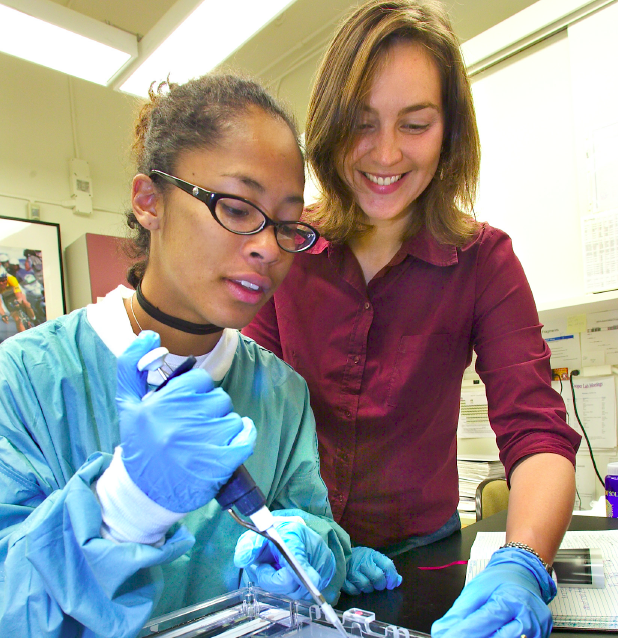 Jill Fuss(right) is co-founder at CinderBio, a startup that blossomed out of a summer project at Lawrence Berkeley National Laboratory. Jill Fuss(right) is co-founder at CinderBio, a startup that blossomed out of a summer project at Lawrence Berkeley National Laboratory.
To help evaluate the feasibility and the market potential of a product, it is often a good idea to team up with someone more business-oriented. “Starting a company is not innate, there are many things that scientists need to learn,” says Peter Minor, co-founder of the CITRIS Foundry, an organization at UC Berkeley that supports early stage startups. Yet Minor is optimistic about scientists’ ability to succeed, explaining, “I’ve noticed that when scientists receive the proper training, [they] form incredible entrepreneurs.” Nevertheless, for would-be entrepreneurs, there is no single route to success.
From bench to business
For scientists aspiring to enter the world of business, the road to entrepreneurship may not be straight, but a good idea can go far. Take Will Hubbard, who studied industrial engineering and economics at Berkeley. During a class, he met soon-to-be cofounder Brian Kim, and after a few conversations they had the “aha!” moment that led to their company. “We saw the potential of this new technology to provide low-cost, low-power sensors,” Hubbard describes. They took their skills out of the lab and started ChemiSense, a company that makes portable sensors to detect air pollution.
The two turned to the resources available at Berkeley, building a company while simultaneously completing their studies. They joined an incubator called VentureLab, a collection of early-stage companies and experienced advisors that provide seed funding, training, and an environment where startups can thrive. Hubbard and Kim also obtained a business certificate from the Berkeley Center for Entrepreneurship. The center gave them the tools and experience needed to accelerate the growth of their company once their research was finished.
Yet despite these resources, fully benefitting from Berkeley’s entrepreneurial programs required some digging. “There were many resources, but they were spread all over the place,” Hubbard says. Fortunately, in recent years a number of organizations have sprung up to connect students with those resources. Today, ChemiSense is a member of the California Institute for Quantitative Biosciences (QB3) Garage at Berkeley, an incubator that provides equipment and lab space for research-intensive startups. As Hubbard explains, “The resources that QB3 provided, both in terms of the physical materials and the people we’ve come to know along the way, have helped a tremendous amount with growing our technology, product, and company.”
The science behind Cinderbio, on the other hand, grew out of a short-term academic project that Jill Fuss oversaw. “The project was initially given to a summer student co-mentored by me and the other co-founder,” Fuss recalls. The project entailed the study of exotic microbes and was funded by the Department of Energy. After years of research, Fuss explains that “[we were] amazed to see how active and stable were the enzymes [we] produced.” However, their grant was coming to an end, and “after the money from the grant ran out, we decided to continue the idea and start a company.” They realized that the enzymes they were using in their research were resilient enough to be used to cleanse toxic chemicals in harsh, industrial conditions. Cinderbio then applied to startup competitions and received enough advice and cash prizes to get off the ground.
But what happens when there isn’t a clear, direct path to a successful company? Many scientific startups show promise but require years of painstaking, costly research to develop their product. The delay between early-stage research and profit is even referred to as the Valley of Death, and it can stop a budding company in its tracks. Because traditional investors favor projects that become profitable quickly, there is a vacuum of support for these highly technical projects.
To help bridge the Valley of Death for nascent startups, Lawrence Berkeley National Laboratory hosts several facilities that allow the free use of their resources, such as the Advanced Light Source or the Molecular Foundry, by mid-stage startups that have submitted a business proposal. In fact, national laboratories are legally obliged to foster economic activity for the public good alongside their pursuit of scientific knowledge. Last year, a new program called “Cyclotron Road” was launched at Berkeley Lab to support entrepreneurial scientists who are developing energy technology ideas that are beyond the academic research phase but still too risky to attract funding from investors. Cyclotron Road is effectively the reverse of a traditional “spin out” model; prospective founders “spin in” to the National Lab, where their technology is developed using research-grade facilities alongside experts in the field. The hope is that this environment will improve the chances of nascent technologies succeeding in the marketplace. “The program was developed as an impulse response to what was happening in the marketplace for research and development,” says Sebastien Lounis, co-founder and director of communications at Cyclotron Road. “In the mid-2000s, there was a huge influx of venture capital into all kinds of early-stage cleantech start ups, but very few ended up being successful using that financing model.” As this funding began to dry up, it created a need for an organization like Cyclotron Road. As Lounis puts it, “To solve the biggest problems, we also need a home for the most talented people.”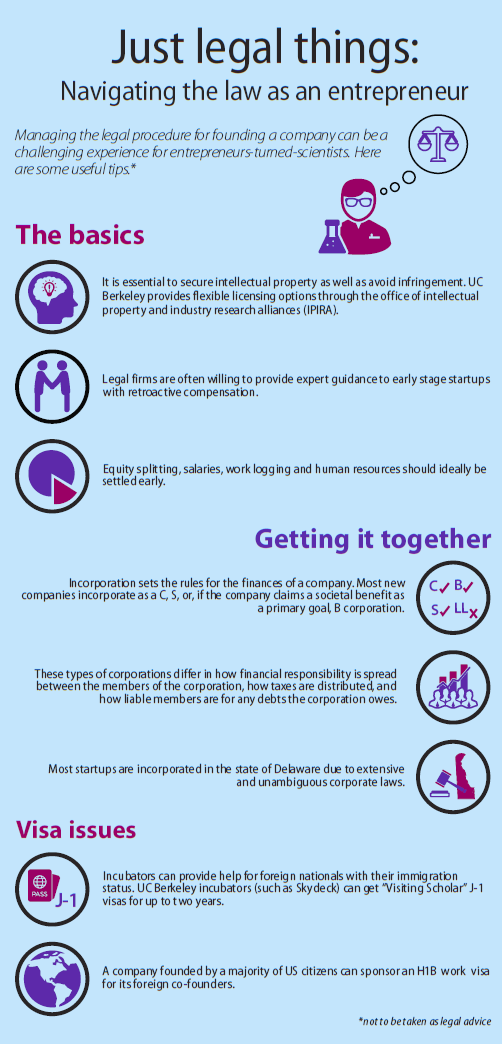
Perilous as it may be, the Valley of Death is only one of the many challenges that young companies must overcome to survive. Scientist-entrepreneurs must also navigate the unfamiliar territory of the legal system. Choices they make in early-stage incorporation paperwork can have profound implications on how they later attract future investors and pay taxes. They also need to worry about intellectual property and even visa issues, all of which impact whether a startup stays afloat. Eventually, though, even established companies must grapple with the reality of all businesses: maintaining the bottom line.
Paying the bills
The key goal for any business idea comes down to two related issues: what form will it take and how will it secure funding? Academic research destined for commercial enterprise was once deemed simple “intellectual property”, and business applications were considered to be outside the purview of universities. Consequently, UC Berkeley has had a history of selling its research ideas to pre-existing companies rather than spinning off independent companies of its own. In recent years, the university has changed directions by freeing up money to directly support entrepreneurs.
A large part of funding for early stage research ventures comes from grants such as the Small Business Innovative Research (SBIR) program. These are grants specifically designed to base a startup on ideas generated from academic research, and offer support in proportion to a company’s growth. Importantly, these grants are “non-diluting”, meaning the founder retains full ownership of the funded company. This contrasts with private funding, which is often exchanged for shares in a company. Such no-strings-attached “free money” is essential to grow a company that has yet to build a product. As Fuss’ company grew from an idea to an established startup, phase I grants from SBIR funded CinderBio’s research when the company’s earlier cash prizes ran out. As the company matures further, Fuss will apply for phase II of SBIR’s tiered funding to match CinderBio’s growth.
While university grants can be crucial during the early years of young business, sometimes this support is insufficient to drive a resource-intensive project. Regular banks will not provide loans to risky ventures, so researchers often end up resorting to private funding of their ventures. For example, “business angels” are individuals with an interest in promoting entrepreneurship in a specific area and who provide seed funding to a select group of newborn companies. Similarly, venture capitalists (VCs) are investors who take risks by investing in a larger number of young promising companies in the hopes that one will be successful. The premise is that typically one success will offset the losses of others many times over.
In contrast to the last decade’s surge of software-based startups, an increasing number of business angels and VCs are promoting technological companies on account of their “tangible assets”. These are products, infrastructure, and intellectual property that are tied to physical objects that can be sold or traded. By possessing tangible assets, newer tech companies are arguably less sensitive to the ebb and flow of the stock market. Other investors are simply motivated by the desire to give back to society and bring innovation out of the lab. “Silicon Valley initially thrived on research-heavy, capital-intensive innovation, and is now coming back to it,” says Gerry Barañano, director of the Tech Futures Group, which offers free assistance to young startups. Berkeley now has specific groups of VC and angel funds, like the Batchery, that specifically fund technology-based venture.
 A heatmap of the number of startups with UC Berkeley-associated intellectual property reveals an interesting pattern. While many startups are located in the South Bay - the traditional Silicon Valley hotspot - there is an intense concentration of Berkeley associated startups in the East Bay. Particularly in the cities of Berkeley and Emeryville. A heatmap of the number of startups with UC Berkeley-associated intellectual property reveals an interesting pattern. While many startups are located in the South Bay - the traditional Silicon Valley hotspot - there is an intense concentration of Berkeley associated startups in the East Bay. Particularly in the cities of Berkeley and Emeryville.
A new academic path
While it isn’t possible, or advisable, for every graduate student or postdoc to become an entrepreneur, it is important to revisit the role of entrepreneurship in the academic world. Whether it is starting a company, joining a startup in need of brainpower, or simply interacting with and learning from the business community at the university, taking an entrepreneurial approach to science can be uniquely rewarding. Minor, who has seen many graduate students become entrepreneurs, points out that “investigating entrepreneurship while investigating science is a highly synergistic experience.”
Taking one’s research out of the laboratory and into the business community will always be a challenge. In the past, this was because of cultural factors such as a lack of institutional support or an academic climate that discouraged business ventures. Now, resources within UC Berkeley and the Bay Area have given academics the tools needed to overcome these barriers, allowing them to focus on growing a successful business. While basic research will always be a core goal of the university, UC Berkeley scientists can now use their expertise to make the world a better place through business innovation as well. As Ed Zschau, a famous entrepreneur in the world of high-tech said: “Entrepreneurship is not about starting a company. Entrepreneurship is an approach to life. It is about leaving footprints.”
- Ioana Aanei is a graduate student in the department of chemistry, Chris Holdgraf is a graduate student in the Helen Wills Neuroscience Institute, and Antoine Wojdyla is a postdoctoral researcher in materials science at Lawrence Berkeley National Laboratory.
This article is part of the Fall 2015 issue.
https://www.berkeleysciencereview.com/article/2015/11/20/cyclotron-valley |
|
|
 Primer
Primer
 Anterior
2 a 12 de 12
Siguiente
Anterior
2 a 12 de 12
Siguiente
 Último
Último

|
|
| |
|
|
©2025 - Gabitos - Todos los derechos reservados | |
|
|










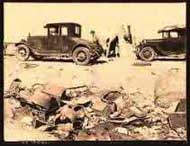
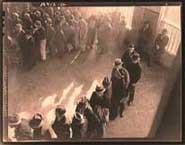















 Ảnh minh họa
Ảnh minh họa

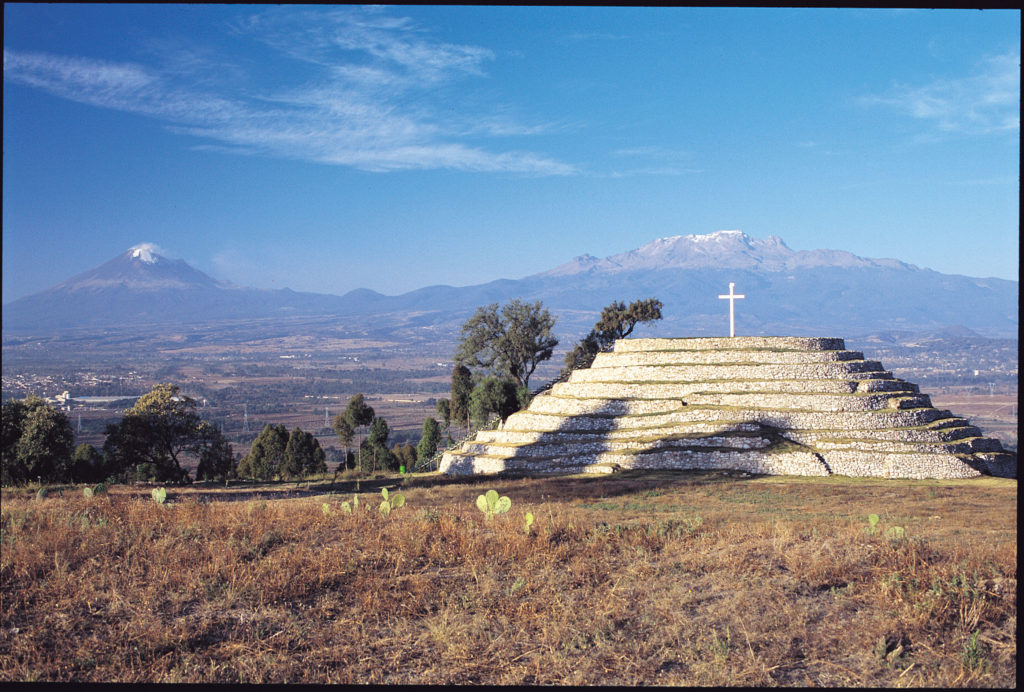











 Peter Fiske, Haas MBA and CEO of PAX Water Technologies believes that PhDs are very well suited to entrepreneurship.
Peter Fiske, Haas MBA and CEO of PAX Water Technologies believes that PhDs are very well suited to entrepreneurship. Jill Fuss(right) is co-founder at CinderBio, a startup that blossomed out of a summer project at Lawrence Berkeley National Laboratory.
Jill Fuss(right) is co-founder at CinderBio, a startup that blossomed out of a summer project at Lawrence Berkeley National Laboratory.
 A heatmap of the number of startups with UC Berkeley-associated intellectual property reveals an interesting pattern. While many startups are located in the South Bay - the traditional Silicon Valley hotspot - there is an intense concentration of Berkeley associated startups in the East Bay. Particularly in the cities of Berkeley and Emeryville.
A heatmap of the number of startups with UC Berkeley-associated intellectual property reveals an interesting pattern. While many startups are located in the South Bay - the traditional Silicon Valley hotspot - there is an intense concentration of Berkeley associated startups in the East Bay. Particularly in the cities of Berkeley and Emeryville.
